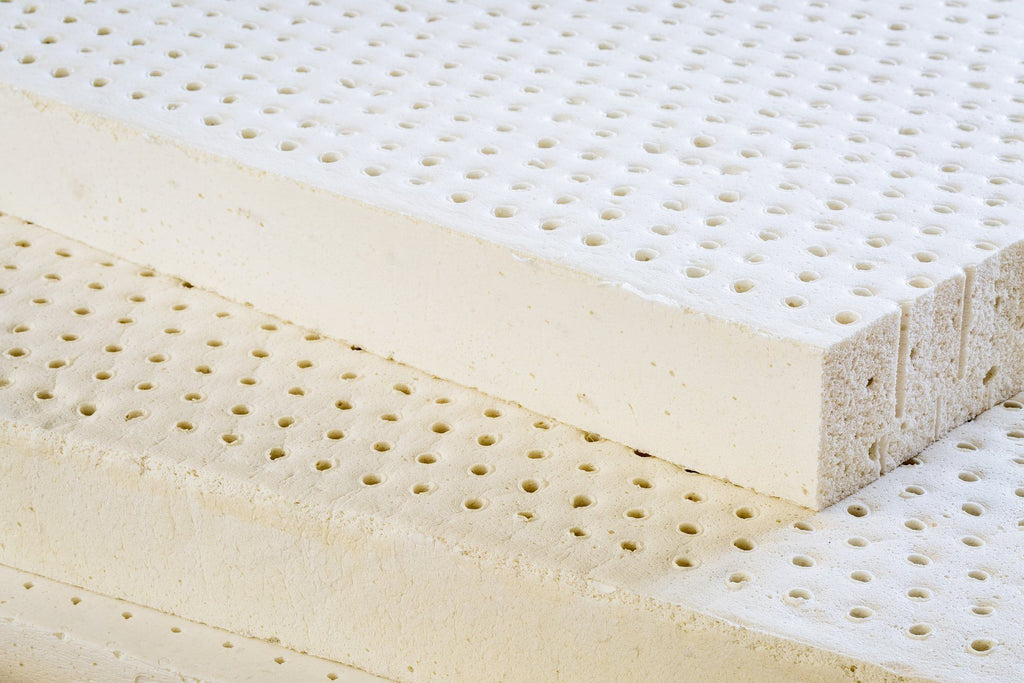Variations in Natural Latex Explained

When you buy an authentic natural latex mattress, you may notice some variations in the latex foam. It’s not at all uncommon to see certain variations that occur during the manufacturing process. In fact, some would say it's these variations that let you know each mattress is made through a natural process, and not mass produced the way many products are.
The most important fact you need to know is that these variations are perfectly natural, and have zero impact on the quality, structural integrity, or durability of your natural latex mattress.
Here are some of the common variations you may find in your natural latex mattress.
- Rips and tears in the latex. These most commonly occur when the latex foam is being removed from the hot forms they are baked on. What happens is the baking pins get quite hot during the baking process, and cool off at a slower rate than the latex foam. When the foam is pulled away from the pins, it often tears, just a tiny bit in the process. Fortunately, it is hardly noticeable when the mattress is flat.
- Loose skin. Fortunately, loose skin offers zero impact to the functionality of the mattress. Most people will never see this unless you remove the casing around your mattress, and even then, only if you look closely. Again, this is a common issue. One that does not cause any problems for the mattress.
- Visual variations in hole size. These can occur for many different reasons, and have no impact on how the mattress sleeps or how well it will stand the test of time. They usually occur, like the rips and tears, when being removed from the pins when some stretching may occur.
- Inconsistencies in the texture. One of the most common of these textural inconsistencies occurs when the holes from the pins do not go all the way through to the other side of the latex foam layer. This is normal, and does not impact the air flow through the mattress, which is something many people worry about.
- Burnt latex specks. Occasionally people will notice what appears to be specks of burnt latex in the surface of their mattresses. This occurs when the small pieces that come loose when the mattress is dislodged from the hot pins fall to the bottom of the form, and are baked into the surface of the next mattress.
- Impression lines from the baking mold. This is more common in Dunlop latex than in Talalay latex, and it occurs when the mold creates an impression line along its seam. It isn’t a glue line as there is no glue in PlushBeds natural latex mattresses.
- Color inconsistencies. As with most natural materials, latex also experiences color inconsistencies. This can be present in both Dunlop latex layers and Talalay latex layers.
- Latex injection marks. These are marks created when latex is injected into the mold. These marks often appear as circles, squares, or rectangles. Like most other variations in latex mattresses, these do not affect the functionality, comfort, or form of your mattress.
You don’t need to be an expert to notice that your natural latex mattress offers exceptional support and comfort. PlushBeds is pleased to offer our top of the line natural latex mattresses, so you can enjoy a better night’s sleep for many years to come.
Link to Us!
If you found this article useful and shareable, please copy and paste the following into the html code of your website or blog:
Learn More About Going Green at the <a href="https://www.plushbeds.com/blogs/green-sleep/variations-in-natural-latex-explained">PlushBeds Latex Mattress Blog</a>.
*Please note that we DO NOT accept guest blog posts. Any inquiries into this will be respectfully left unanswered.
The post Variations in Natural Latex Explained appeared first on PlushBeds Latex Mattress Blog.
